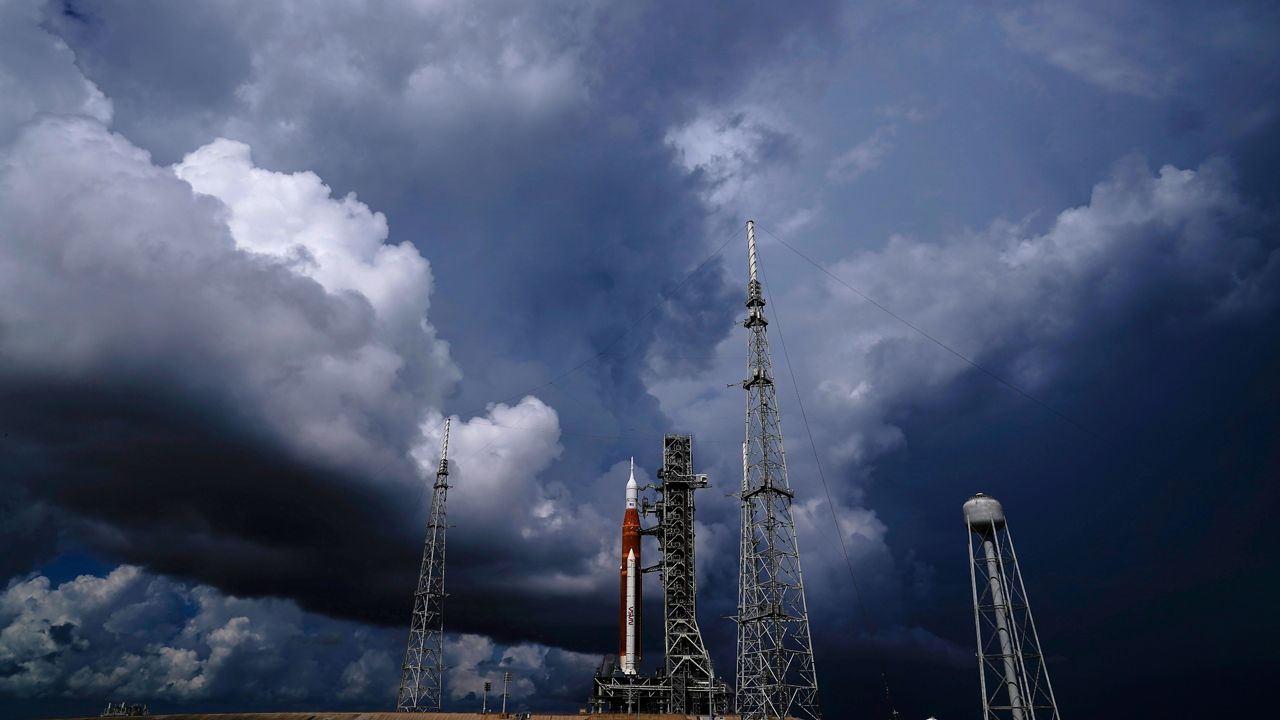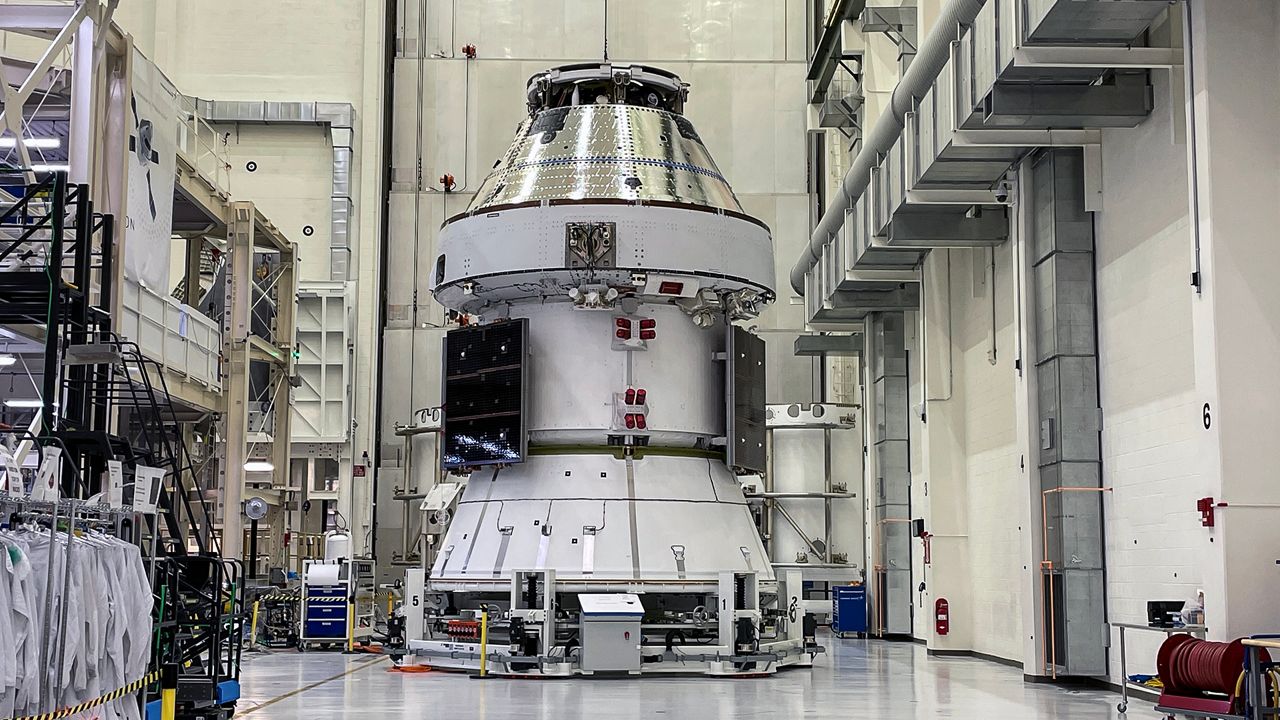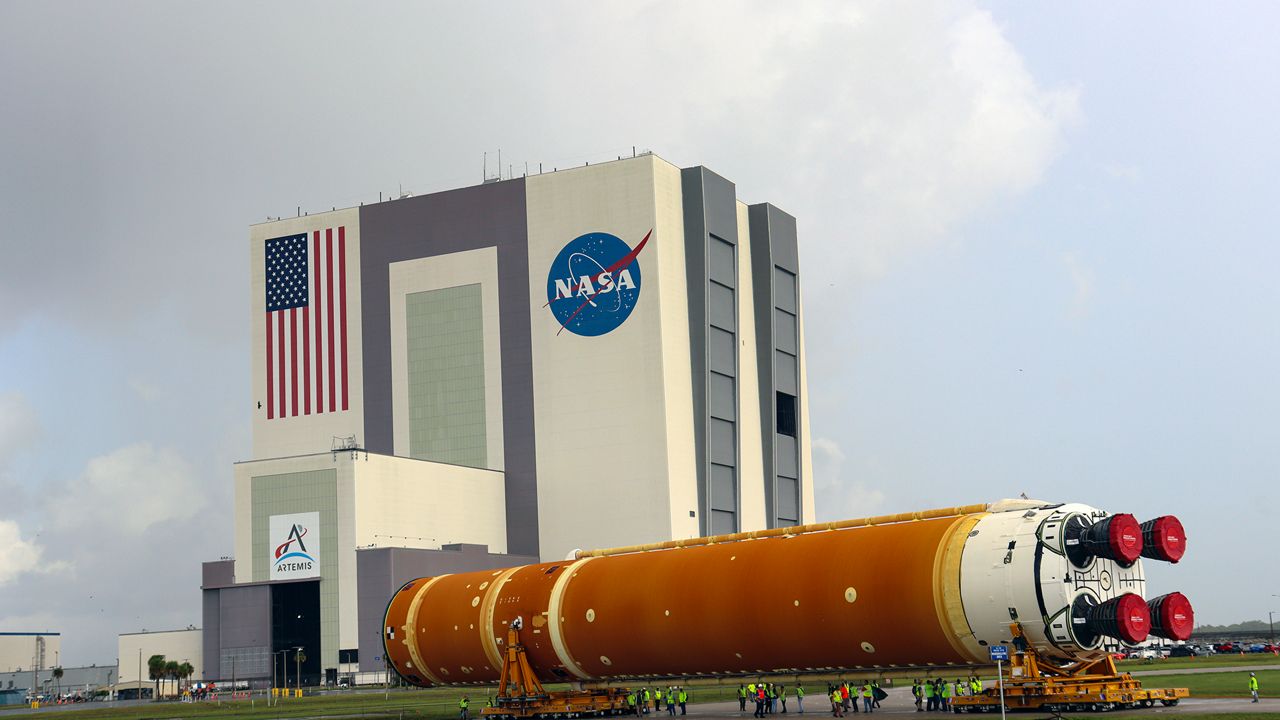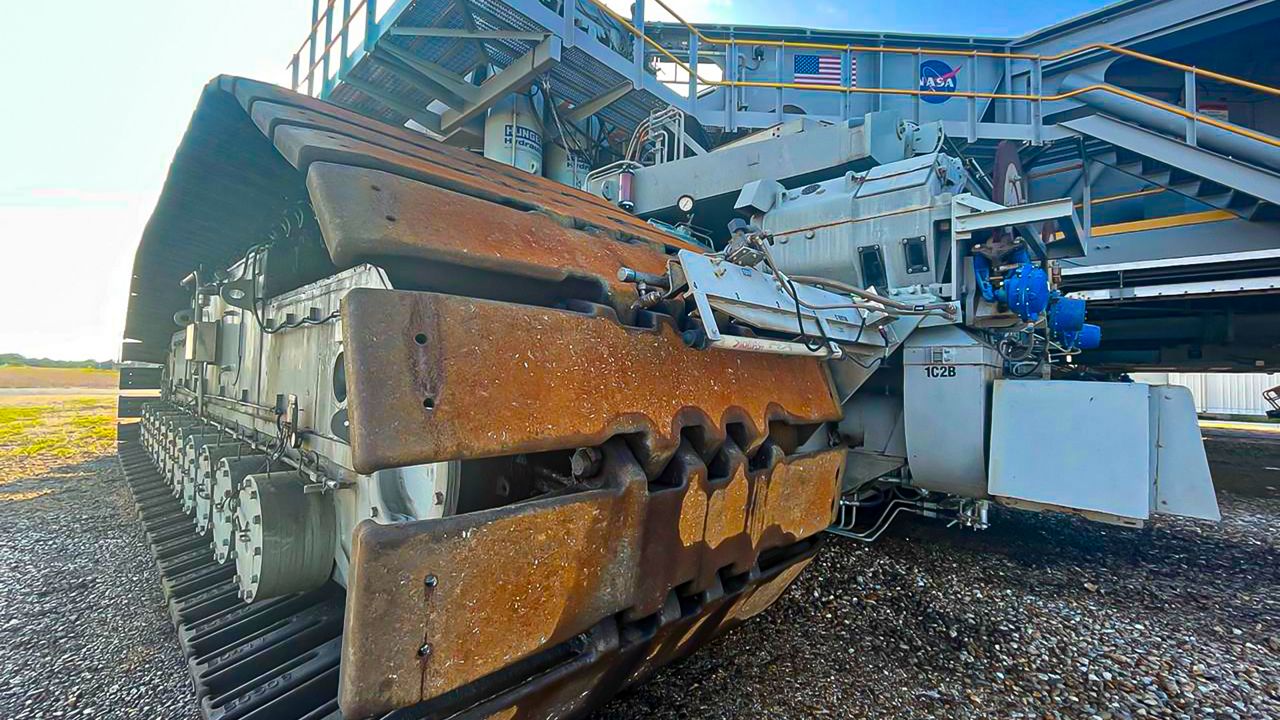KENNEDY SPACE CENTER — Despite the looming Tropical Depression 9, NASA on Friday announced that it will proceed with the third attempt of launching its Artemis I moon mission next week as it eyes the developing system.
What You Need To Know
- Both NASA and meteorologists are keeping an eye on the system
- Wind speeds become a concern, NASA said it would roll back the Artemis moon rocket
Both NASA and meteorologists have kept an eye on the system after it formed in the Caribbean. It is expected to pass over Florida late Tuesday evening and into early Wednesday morning as a hurricane.
During a Friday afternoon teleconference, NASA officials said they would go forward with the Tuesday, Sept. 27 launch of the uncrewed Artemis, with the 70-minute launch window opening at 11:37 a.m. EDT.
Mike Bolger, NASA’s Exploration Ground Systems Program manager, said that NASA would be moving forward with Plan A of launching the uncrewed Artemis I but said Plan B would be tracking Tropical Depression 9’s speed, possible arrival time and anticipated path.
In fact, Spectrum News 13 Chief Meteorologist Bryan Karrick said the weather does not appear to be favorable for a launch on Tuesday.
“Although we're still out several days, a tropical system moving in our general direction could bring wind, rain, and rough seas to our east coast around launch time,” he said.
The 45th Weather Squadron issued a notice on Friday, stating that it was giving a 20% chance of favorable launch weather.
“Deep tropical moisture will spill across the Spaceport Tuesday, with widespread cloud cover and scattered showers likely during the launch window,” it stated.
Space Launch System rocket Chief Engineer John Blevins said that NASA would look at the 5 p.m. EDT Friday forecast update of the tropical depression and would meet to discuss how to proceed.
If the updated forecast does not look promising, Blevins said NASA would make an announcement sometime on Saturday that it would roll back the Space Launch System rocket and its companion the Orion capsule to the Vehicle Assembly Building from their current home at Launch Pad 39B at the Kennedy Space Center.
However, Bolger said if NASA has to roll the rocket back, it would not be an issue, even as Tropical Depression 9 is expected to reach Florida around launch time.
“I don’t think we are cutting it close,” Bolger said, saying that storms are hard to predict.
Tom Whitmeyer, NASA's deputy associate administrator for Common Exploration Systems Development, agreed.
“We have always done it this way, even during the shuttle program,” he said, adding that predicted storms have moved out of the launch pad’s path and that is the team’s hope for Tuesday’s launch.
Mark Burger, the launch weather officer of the 45th Weather Squadron, explained the wind conditions that would have to happen to roll back the rocket. He said 85 mph gusts would have to be predicted at the launch pad for them to roll it back to the Vehicle Assembly Building.
During the slow march back to the Vehicle Assembly Building, sustained winds would have to be less than 40 mph. It would take between six to 12 hours to make the 4-mile journey from the pad to the building.
NASA sought out a waiver for a battery check of the rocket’s flight termination system from Space Launch Delta 45 Operations, which operates the Eastern Range. Since the launch will take place on Tuesday, it would be 42 days since the abort system batteries were checked, nearly double the time the agreement allowed.
Despite that, Blevins confirmed during the teleconference that the launch team has been given the go-ahead from the Eastern Range.
“They have received approval on the launch attempts on the books,” he said of the Tuesday launch and of the backup launch date of Sunday, Oct. 2.
Getting off the ground
Getting the uncrewed mission off the ground has plagued NASA. The first attempt of launching the Space Launch System rocket and Orion was on Aug. 29, 2022, but it was canceled due to a liquid hydrogen leak and temperature issues with the engines.
Artemis I’s second launch attempt on Saturday, Sept. 3 was scrubbed due to a liquid hydrogen leak at the 8-inch quick disconnect line that is an umbilical that is used to feed and drain the liquid hydrogen from storage tanks into the rocket’s core stage.
Since the second launch attempt, NASA engineers replaced two seals: one at the 8-inch line used to fill and drain liquid hydrogen from the core stage, and another seal located at the 4-inch bleed line used to redirect some of the fuel during tanking operations.
However, during a cryogenic demonstration test on Wednesday, to see if the two seals that were replaced on the fuel lines that go from the mobile launcher to the rocket worked, another liquid hydrogen leak occurred.
Despite the new leak on Wednesday, NASA hailed the test a success since all the objectives were met and engineers were able to manage the leak and fill up the liquid hydrogen side of the rocket.
Launch Director Charlie Blackwell-Thompson stated during the wrap up of the test on Wednesday that NASA learned a lot from the demo and the new “kinder, gentler” plan of fueling the rocket helped deal with the unexpected leak.
Her sentiments were echoed on Friday during the teleconference, with Whitmeyer saying that he thought the test was successful and that all went well.








